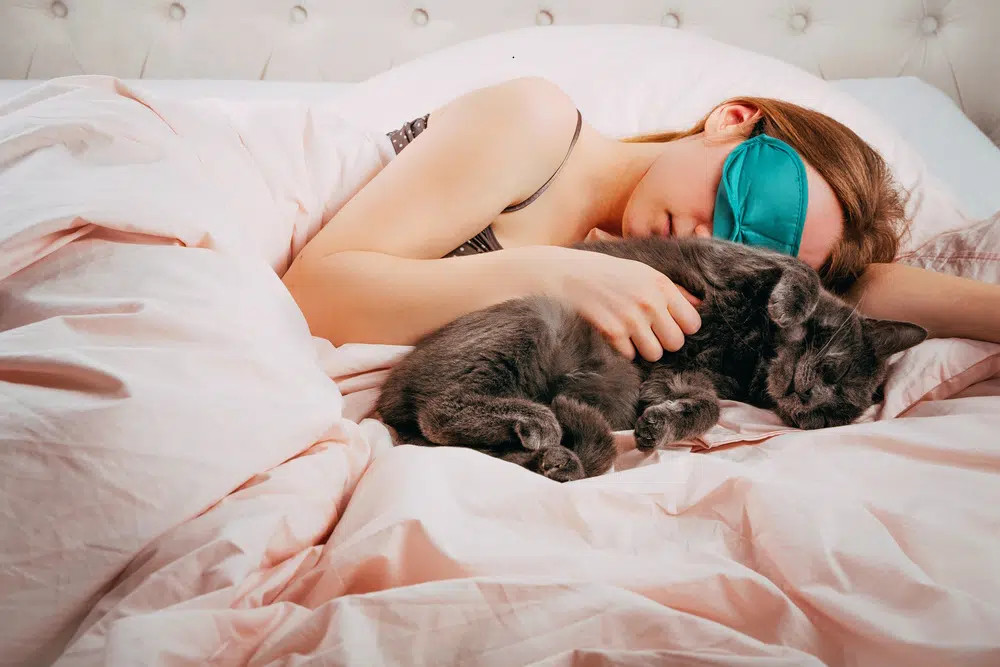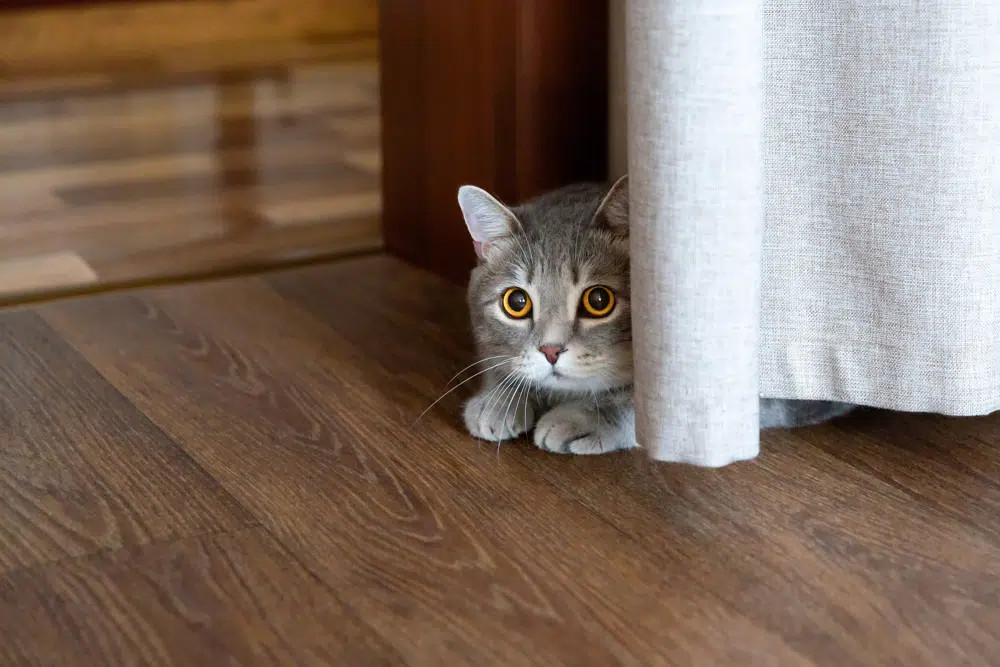Scientists have made significant strides in understanding feline body language, yet many mysteries remain about our feline companions. We can’t truly know what transpires in a cat’s mind, as they don’t communicate verbally like humans. This necessitates using indirect methods to interpret their intentions and feelings.
However, cats are far from silent. Despite lacking human-like speech, they are masters of communication through body language, constantly conveying messages to their owners and the world around them.
While cats don’t engage in kissing as humans do, they possess a unique repertoire of behaviors to express affection. We will delve into these fascinating expressions of love, with a special focus on the intriguing “Cat Kiss.”
What Exactly is a Cat Kiss? The Mystery of the Slow Blink
One of the most subtle yet profound ways cats display affection is through the “slow blink,” often referred to as a “cat kiss.” This gentle gesture serves as a non-verbal invitation for connection and signifies trust and comfort. In essence, a slow blink is a deliberate, elongated blink, performed with relaxed eyelids. It’s a clear signal of affection and trust, sometimes used by cats to solicit attention from their beloved humans.
Interestingly, cats may also recognize and interpret the slow blink when initiated by humans. It’s a rare instance where we can attempt to communicate with cats on their own terms. While we can’t definitively confirm their complete understanding, reciprocating the slow blink is often perceived positively by cats.
Image Credit: sophiecat, Shutterstock
Alt text: A ginger cat affectionately licks the forearm of its owner, showcasing a feline gesture of bonding and care.
Beyond the Blink: Other Languages of Cat Affection
While the slow blink, or cat kiss, is a particularly charming way cats express their love, their affectionate vocabulary extends far beyond this gentle eye movement. Here are several other common ways cats show they care:
- Purring: The rumbling purr of a cat is universally recognized as a sign of contentment and joy. However, purring isn’t solely reserved for happiness. Cats may also purr when in pain or distress as a self-soothing mechanism. Therefore, it’s essential to observe accompanying body language cues to accurately interpret the purr’s meaning.
- Bunting: Also known as “head bunting,” this behavior involves a cat rubbing its head, body, or cheeks against you or objects. Bunting is a scent-marking behavior; cats deposit pheromones from glands on their face and body. By bunting you, your cat is essentially claiming you as part of their “colony” and marking you with their scent.
- Kneading: This rhythmic pushing of paws, often accompanied by purring, mimics the kneading motion kittens use to stimulate milk flow from their mothers. While the exact reason for adult kneading is debated, it’s generally considered a sign of comfort, contentment, and a link to kittenhood security. Some cats may even suckle on the soft surface they are kneading.
- Sleeping Proximity: A cat choosing to nap on your lap, beside you, or even just in the same room is a significant sign of trust and safety. Cats are vulnerable when they sleep, so selecting your presence for slumber indicates they feel secure and protected around you. Lap preference varies among cats and isn’t necessarily a reflection of affection levels.
- Tail Talk: A cat’s tail is an expressive barometer of their emotions. A relaxed, slightly upright tail, often with a gentle curve at the tip, indicates contentment and happiness. A softly swaying tail can signal excitement or playfulness. Pay attention to your cat’s tail for subtle clues to their mood.
- Grooming Behavior: If your cat licks your hands, hair, or even clothes, consider it a high compliment! Mutual grooming is a vital social bonding activity among cats. When your cat grooms you, they are including you in their social group and expressing affection and care.
Remember, each cat is an individual with unique personality quirks. Some cats may exhibit these affectionate behaviors more frequently than others. Some may rarely slow blink but be prolific lickers, while others may hardly ever knead. Understanding your cat’s individual expressions of affection is key to appreciating their unique way of showing love.
 woman-sleeping-with-her-catImage Credit: ajlatan, Shutterstock
woman-sleeping-with-her-catImage Credit: ajlatan, Shutterstock
Alt text: A serene image of a woman peacefully sleeping alongside her cat on a bed, highlighting the close bond and comfort cats provide.
Decoding Feline Aloofness: Why Some Cats Seem Less Affectionate
Moving from an overtly affectionate cat to one that seems more distant can be perplexing. It’s easy to misinterpret a cat’s aloofness as dislike or rejection, especially when comparing them to more demonstrative feline companions. However, it’s crucial to remember that perceived aloofness rarely reflects a lack of affection. Cats are inherently independent animals, and their behavior is significantly shaped by temperament and individual character.
Some cats are naturally shy, making them less outwardly expressive in their communication and affection. Others may exhibit hesitancy due to past negative experiences, particularly when adjusting to a new home. Cats in new environments often need time to decompress and may become more affectionate as they acclimate and build trust. Cats that experienced inadequate socialization during kittenhood might also remain less demonstrative throughout their lives.
Patience and positive reinforcement are powerful tools for encouraging even seemingly aloof cats to open up. Creating a safe and predictable environment can gradually coax shy cats out of their shells. However, it’s equally important to accept and appreciate your cat’s personality as it is. Not every cat will be a lap cat or constantly display overt affection, and that’s perfectly normal.
 cat-hiding_Image Credit: Mantikorra, Shutterstock
cat-hiding_Image Credit: Mantikorra, Shutterstock
Alt text: A timid cat partially concealed behind a curtain, illustrating feline shyness and the need for a secure environment for cats to feel comfortable.
Nurturing Feline Affection: Encouraging Your Cat’s Love
The most fundamental step in fostering affection is to cultivate a secure and loving environment for your cat. It’s vital to avoid trying to force a cat to adopt personality traits that are not inherent to them. Embrace and appreciate your cat’s individual disposition, even if it differs from your ideal level of affection.
Nevertheless, there are proactive steps you can take to encourage your cat to express affection more openly. Dedicate quality time to your cat daily. This could involve interactive play, gentle petting, or simply relaxing in the same space. Cats thrive on routine and attention, and consistent interaction strengthens your bond.
Always respect your cat’s boundaries. Never force interaction if your cat is unwilling or displaying signs of discomfort. If your cat seems hesitant or pulls away, give them space and try again later. Utilize positive reinforcement techniques to associate interaction with positive experiences. Praise, gentle petting, and small, healthy treats can be effective rewards when your cat engages in desired behaviors or initiates interaction.
Building trust and affection takes time and patience. Allow your cat to warm up to you at their own pace. Cats are sensitive creatures and dislike feeling pressured. Unlike dogs, which are often people-oriented by nature, cats form bonds on their own terms. Cherish your relationship with your cat for the unique and special connection it is, appreciating their expressions of affection, whether subtle blinks or enthusiastic purrs.
Interactive play is crucial for both physical and mental stimulation, and the right toy can significantly enhance playtime. Consider toys like Hepper’s Catnip Stick Toys, known for their durability and organic catnip filling. Their pastel colors and prey-like shape are designed to engage your cat’s natural instincts and provide hours of entertainment.
Hepper Stick Catnip Cat Kicker Toy – No Filler – Like all the best cat toys our is stuffed with 100% organic catnip. Cheap cat toys with…
- Flexible Play – Simple plush shape is great for biting, scratching and pawing. It can start life as…
- Durably Designed – Our cat safe toys are hand-stitched with a double-lined exterior construction for…
At Catster, Hepper’s parent company, we believe in providing high-quality products for your feline friends.
Conclusion: Appreciating the Nuances of Cat Affection
Cats may not express affection in overtly human ways, but their capacity for love and connection is undeniable. Understanding feline body language is key to deciphering their subtle yet meaningful expressions of affection. Cats experience a range of emotions, and often, behavioral issues arise when we misinterpret their feelings or fail to meet their needs, leading to stress, boredom, frustration, or fear.
Cats communicate affection through a diverse array of body language cues. The slow blink, or “cat kiss,” stands out as a particularly significant gesture of trust and love. Humans can even reciprocate this gentle blink to engage in a unique form of cross-species communication with their feline companions. By learning to recognize and appreciate these nuanced signals, we can deepen our bond with our cats and foster a more harmonious relationship built on mutual understanding and affection.
Sources
Featured Image Credit: Julija Sulkovska, Shutterstock

